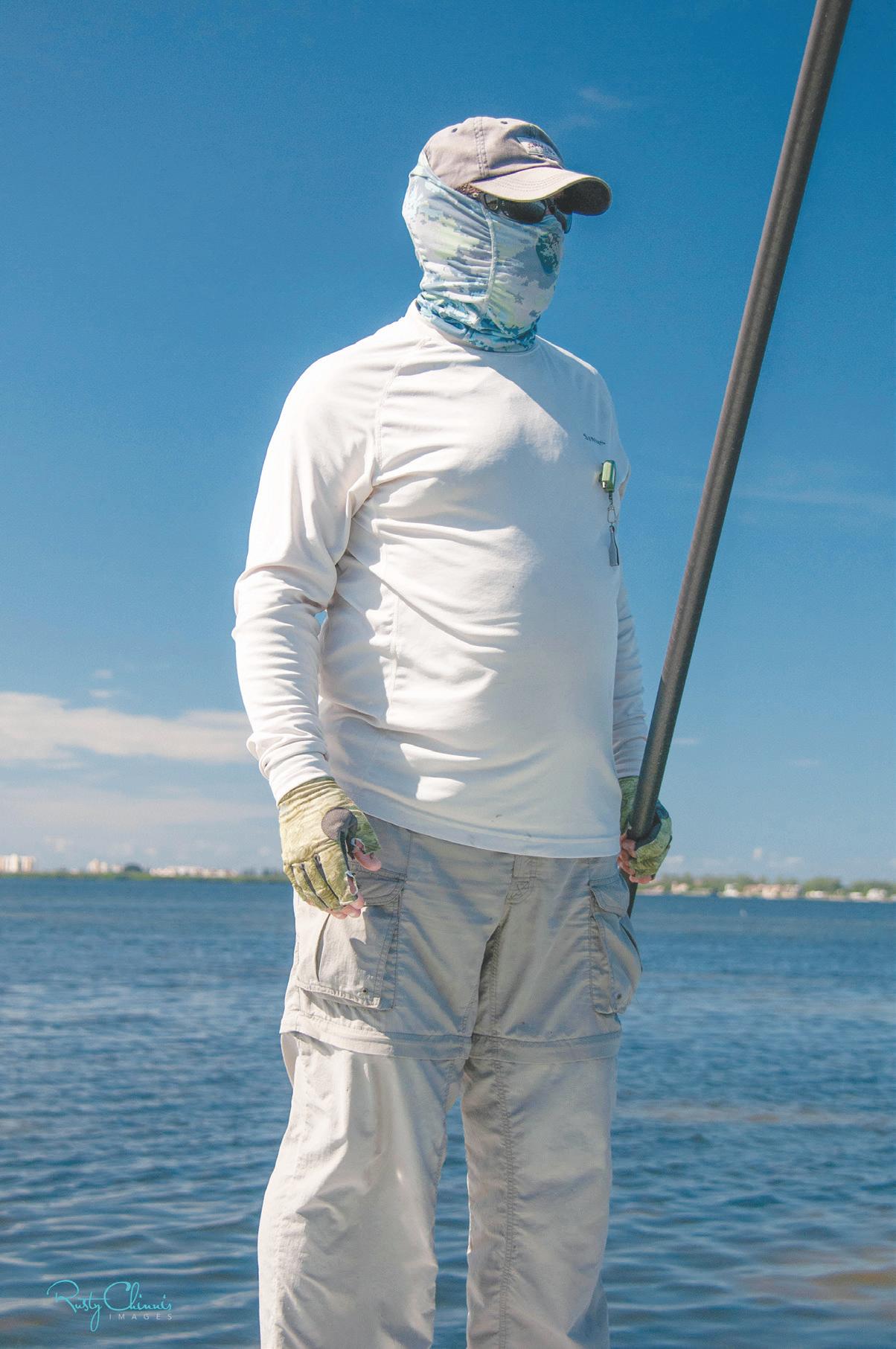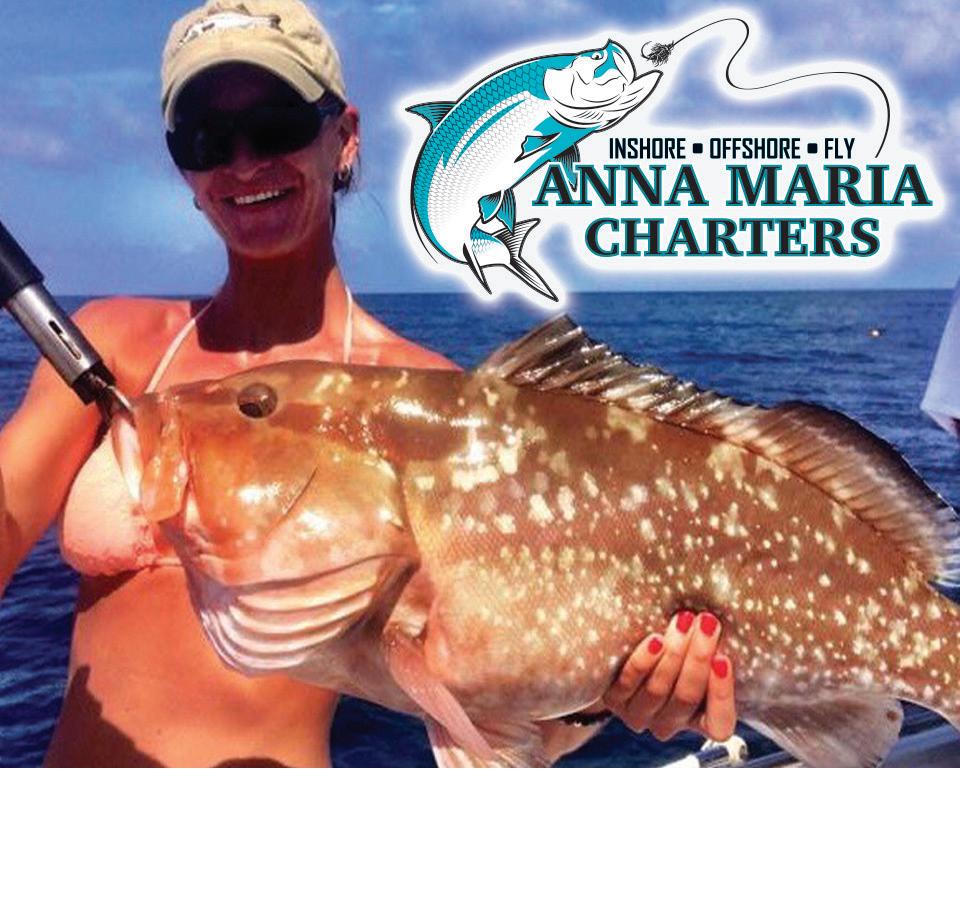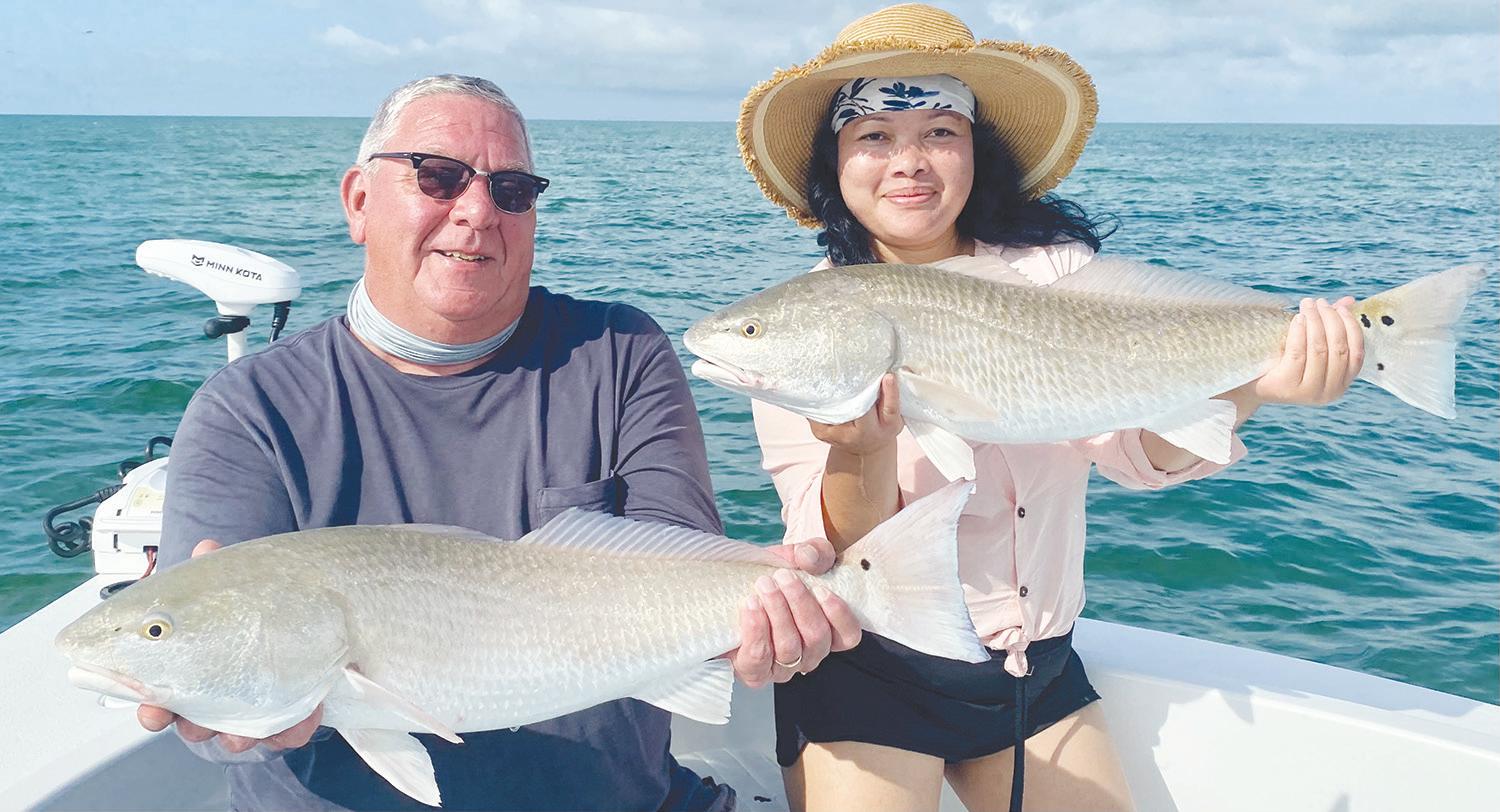
5 minute read
OUTDOORS
20 THE SUN OUTDOORS JUNE 23, 2021
Don't let the sun ruin your fun
Reel Time
RUSTY CHINNIS
Florida is known as the “Sunshine State” and anglers, especially those who sight fish, depend on the sun to see their quarry. Local anglers who appreciate the promise and the power of the sun take advantage of sunscreens, caps and clothing to protect themselves. Unfortunately, those new to the power of the sun can experience some very negative results if they’re not properly protected.
The harmful effects of sun exposure can cause the uninitiated a painful experience, and even spoil a vacation. Sunlight is primarily composed of infrared, visible and ultraviolet light. The ultraviolet light (UV) is potentially harmful and is the wavelength that causes sunburn. Sunburn is a form of radiation burn that results from exposure to this property of light. Symptoms of overexposure in humans consist of red or reddish skin that is hot to the touch and can include general fatigue and mild dizziness. An excess of UV radiation can be life-threatening in extreme cases.
Maximizing your protection from UV light rays is important because the harmful effects of the sun are cumulative over your lifetime. While potentially harmful, the sun is primarily an angler’s friend. If the sun is shining, there’s a good chance the weather will allow you to be on the water. If you sight fish, it assures you’ll have a better chance of seeing your quarry and increases your odds of hooking up.
Many part-time fishermen and visitors from the north don’t fully appreciate the potentially harmful effects of the sun, especially in Florida and the southern regions of the northern hemisphere. The most intense exposure to the sun occurs from 10 a.m. until 4 p.m. - prime time for fishing Florida’s fertile waters. Cloudy and windy days can be particularly deceiving because the harmful rays of the sun can do damage even though the sun is seemingly hidden.
Modern sunscreens are rated according to their SPF or sun protection factor. The theory is that if you can stay out in the sun for 15 minutes without getting burned, a sunscreen with SPF 10 will help you resist sunburn for 10 times that amount of time, which calculates to about 150 minutes.
Our skin has natural SPF depending on the amount of melanin (pigment) it contains. Generally, the darker your complexion, the more melanin you have. No matter what your skin color, the best solution is to avoid the sun as much as possible by applying a high SPF sunscreen and covering the skin, vital protection from the damaging effects of ultraviolet rays.
Another important factor to consider, especially in Florida, is if the sunscreen is reef safe, and if it’s not waterproof, make sure you reapply after a swim or shower. There is also a plethora of high-tech clothing available to anglers that is cool, breathable and contains a UPF (Ultraviolet Protection Factor) as well. Companies like Patagonia, Simms and TACS offer clothing with UPF ranging from 30-50, with 50 being the highest rating. A rating of 50 translates to approximately 97% protection. These same companies also offer gloves to protect the hands, and buffs that protect the ears, face and neck.
There are new innovations announced yearly that make moisture-wicking fabrics even more functional for anglers. An example is face protection buffs that protected the face, but caused moisture from the breath to fog sunglasses. Now they are designed with breathing openings that virtually eliminate that problem.
Get the most out of your time on or around the water by applying some common sense. The sun can be an angler's friend but it can also ruin a vacation.


RUSTY CHINNIS | SUN Protect yourself when going out on the water in Florida’s summer.





CAPTAIN DAVE WHITE | SUBMITTED Tod and Bing Osborn, of Danville, Illinois, show off a pair of redfish caught with Captain David White of Anna Maria Charters.
Snapper bite on inshore
CAPTAIN DAVE WHITE
It’s been a strange week for weather here lately. We here at Anna Maria Charters have been staying close to shore just in case we’ve had to run clients back to the dock or hide from a sudden pop-up shower. Inshore, the mangrove snapper seem to be getting bigger! We’ve gotten keepers up to 18 inches in the bay so far. The consistency and size are continuing to improve daily. The redfish bite has been pretty good for us as well. Catching primarily over-slot fish is always a good time for our clients.
Snook and trout have been plentiful as well. Sometimes you have to bounce around to fish the good-sized trout. But it’s normally worth the trouble. Tarpon fishing has been much more of a challenge this year. The fish haven’t been in crazy numbers. And when you do find a good knot of them, they’re typically in a strange mood. But we’re getting our fair share. You just really have to work for it this year.
The weather seems to have stabilized this week, so we’ll be offshore much more consistently.
CAPTAIN RICK GRASSETT
Anglers fishing with me, out of CB’s Saltwater Outfitters on Siesta Key, had good action recently catching and releasing trout and blues on the deep grass flats of Sarasota Bay on several trips with me. With a persistent west wind plus clouds and rough water in the coastal Gulf, we opted to fish the bay rather than tarpon fish. It was a better option.
Spin fishing anglers scored with CAL jigs and a variety of plastic tails and DOA Deadly Combos while fly anglers fished baitfish fly patterns on sink tip lines. Steve and Connor Pullum, from Hayesville, N.C., fished with me recently and caught and released trout, including several over 20”, and blues on CAL jigs with a variety of tails and DOA Deadly Combos. A couple of other trips had similar action with DOA Lures and flies.
Fishing deep grass flats of Sarasota Bay is a good choice for action with a variety of species including trout, blues and more. Tarpon fishing in the coastal Gulf should be a good option depending on conditions. Our natural resources are under constant pressure from red tides fueled by industrial, agricultural and residential runoff, toxic spills, freezes, increasing fishing pressure and habitat loss and degradation. Please limit your kill, don’t kill your limit!





